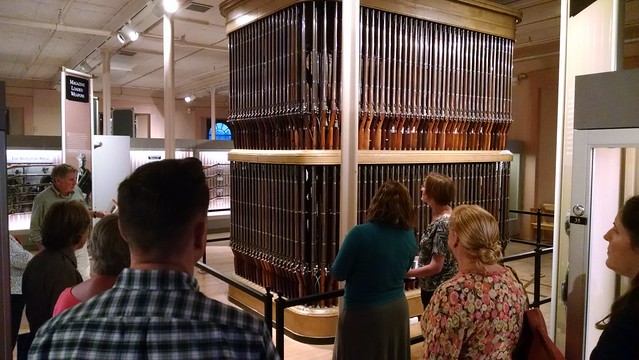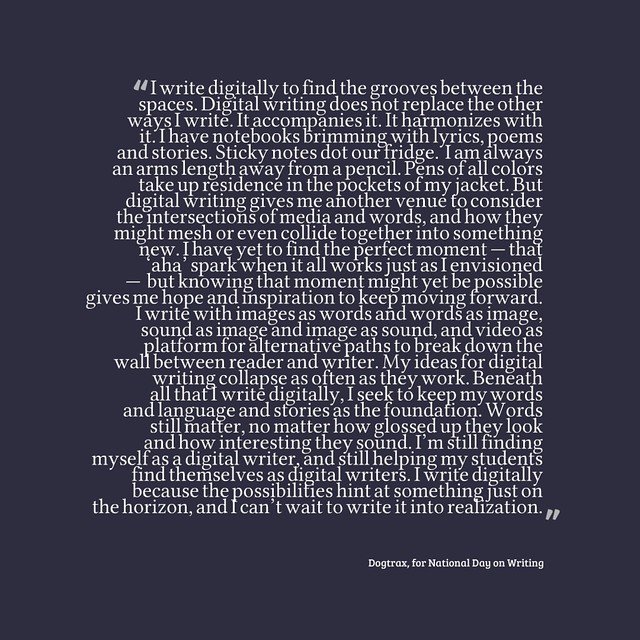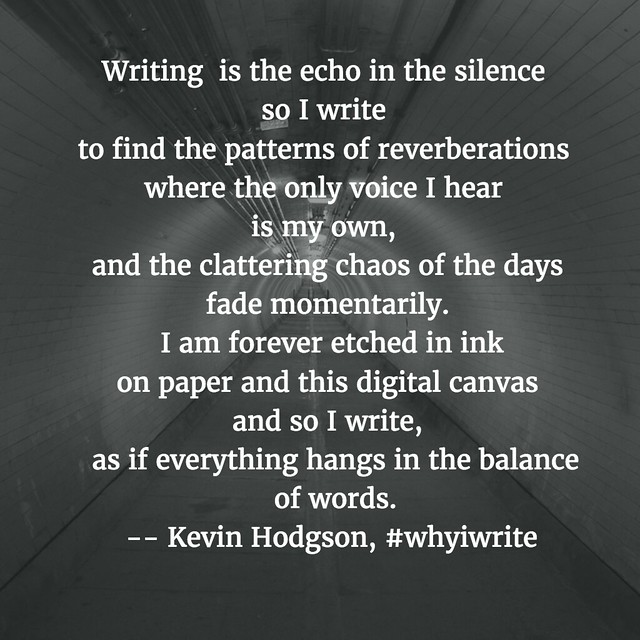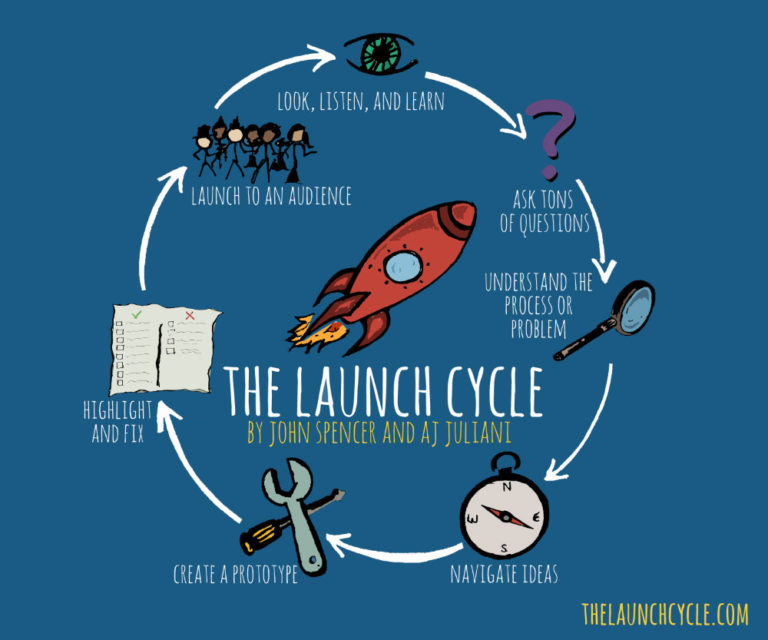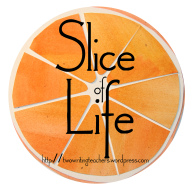 (This is part of Slice of Life, a regular writing activity designed to look at the small moments of life. It is hosted by Two Writing Teachers. You are invited to write, too.)
(This is part of Slice of Life, a regular writing activity designed to look at the small moments of life. It is hosted by Two Writing Teachers. You are invited to write, too.)
The paraprofessional who works alongside me with my sixth graders — she’s someone for whom I have tremendous respect and admiration and gratitude for, on so many levels — pulled me aside yesterday.
“They’re so afraid that they will be wrong that they don’t even know where to start,” she whispered. I nodded. Like her, I too had noticed a sense of reluctance in the room. Many students were staring off, empty page in front of them.
“That’s because there is no right or wrong answer here. That confuses them,” I responded. She agreed. We both were saddened by that insight.
What we were doing was writing short stories as a daily writing prompt. Now, this is not the first time we have done writing into the day, but it was the first time that I pulled out Chris Van Allsberg’s The Mysteries of Harris Burdick as a story generator. If you don’t know what this picture book is all about, check out this video I found by a high school student on YouTube. This YouTuber does a pretty decent job of explaining it.
I had featured four of the 15 mysterious illustrations from the book (I have a portfolio version), instructed my students to choose one of the images (which have a title and caption but no story), and use it as inspiration for 15 minutes of short story writing in their writing notebooks. My only stipulation was that they had to write in First Person Narrative Point of View. Other than that, they were free to use the illustration anyway they wanted.
“There is no wrong way to do this,” I instructed. “The story is yours to write.”
But for some, this open-ended instruction stopped them dead in their tracks. They didn’t know how to begin or where to begin. They didn’t know what I was looking for. How could they write “the story that had gone missing” if they didn’t have the story in front of them?
It saddens me that we have to wrestle creativity like this out of sixth graders. At age 11 and 12, they should always be brimming with ideas, bursting with stories. But their response raises questions: Is this what standardized testing is doing to our students? Has the right/wrong dichotomy immobilized our students into inaction? Is this what the Common Core push away from narrative/poetry writing is doing to our classrooms?
Yes. It is.
In all of our edu-talk about “inquiry”, the question remains: how do we best help our young people see the rich possibilities in the blank slate before them if we don’t give them more opportunities, more freedom, more chances to explore their ideas on the page? Perhaps this happens more in your school than it does in mine. I get them at the end of their time at our school. I notice the echoes of past lessons. I can sense the shift in instructional practices.
Let me end on a positive note: when it came time to share the stories they had written (and we always build in sharing time), there were so many amazing pieces of writing. Stories told from the strangest perspectives. Dialogue-rich and thought-rich stories of characters struggling against the oddity of the world. Stories told in the present, the past, the future. Descriptive language that brought us deep into the landscape of the imagination.
They had it in them. Of course, they had it in them. They needed permission to write the way they wanted to write. Let’s provide them with more of those opportunities, and understand, as teachers, that this kind of creative writing pays dividends in the future.
Writing stories just for the sake of writing stories — no assessment, no grades — is a small gift we can give to our students in this time of data points and standardized testing. Give it, freely, won’t you?
Peace (don’t be afraid to make it happen),
Kevin



